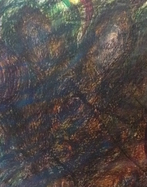随伴関手の節を読む.
2 つの関手 $L : \mathscr{C} \rightarrow \mathscr{D}$, $R : \mathscr{D} \rightarrow \mathscr{C}$ を考える.
任意の対象 $A \in \text{Ob}(\mathscr{C})$, $B \in \text{Ob}(\mathscr{D})$ に対して同型写像
\[
\beta(A, B) : \text{Hom}_\mathscr{D}(LA, B) \rightarrow \text{Hom}_\mathscr{C}(A, RB)
\] が存在して, 任意の $\mathscr{C}$ の射 $f : A \rightarrow A'$ と $\mathscr{D}$ の射 $g : B \rightarrow B'$ に対して図式
\[
\begin{xy}
\xymatrix {
\text{Hom}_\mathscr{D}(LA, B') \ar[r]^-{\beta(A, B')}
& \text{Hom}_\mathscr{C}(A, RB') \\
\text{Hom}_\mathscr{D}(LA', B) \ar[r]_-{\beta(A', B)} \ar[u]^-{\text{Hom}_\mathscr{D}(Lf, g)}
& \text{Hom}_\mathscr{C}(A', RB) \ar[u]_-{\text{Hom}_\mathscr{C}(f, Rg)}
}
\end{xy}
\] が可換になるとき, $L$ を $R$ の左随伴関手, $R$ を $L$ の右随伴関手と呼ぶ.
このとき $\beta(A, LA) : \text{Hom}_\mathscr{D}(LA, LA) \rightarrow \text{Hom}_\mathscr{C}(A, RLB)$ となるが, これを用いて定義される射
\[
\eta{A} = \beta(A, LA)(\text{id}_{LA}) : A \rightarrow RLA
\] は恒等関手 $\text{id}_\mathscr{C}$ から $ R \circ L$ への自然変換になっていると書いてある.
このことを示そうとしているのだがうまくいかない.
本にはこれが当たり前のように記述してあるので, 自分が基本的なところをよく理解していないのだ.
【このカテゴリーの最新記事】
-
no image
-
no image
-
no image
-
no image
-
no image
